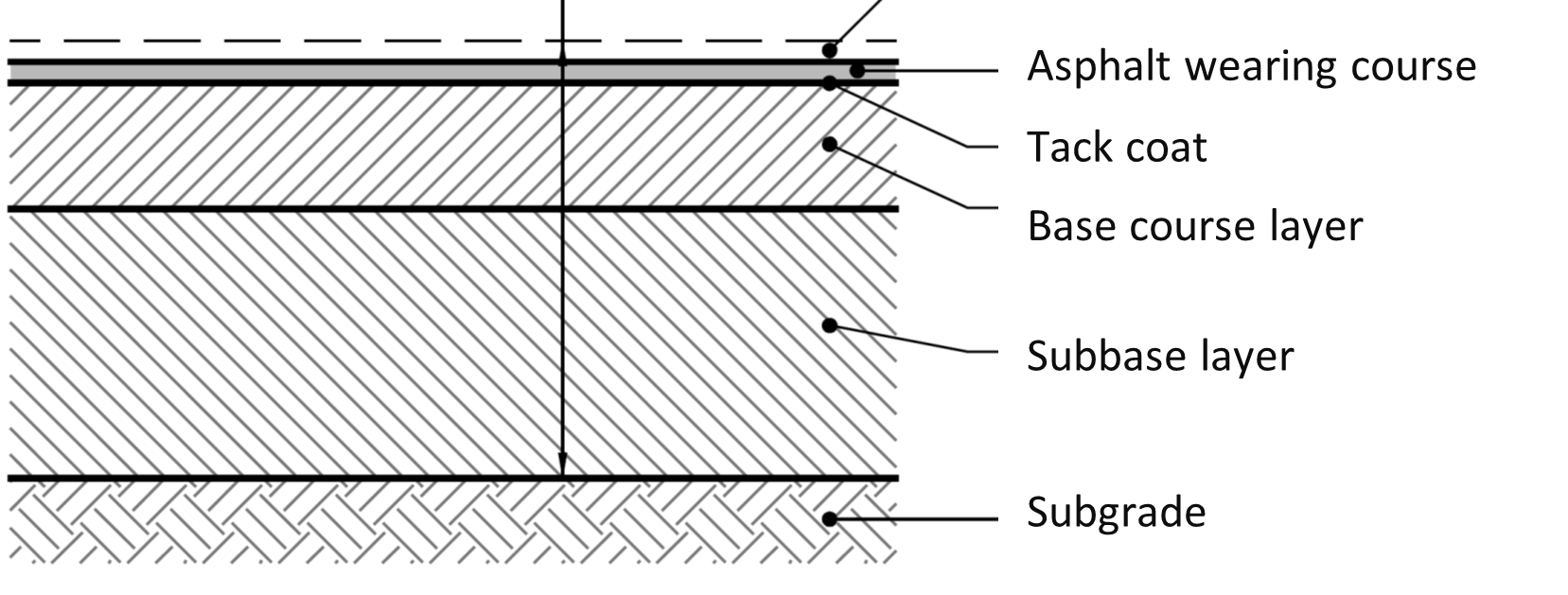What is Asphaltic Concrete?
Asphaltic concrete (AC), commonly referred to as asphalt, is a robust composite material used as the final layer (wearing course) in applications such as roads, car parks and footpaths. Asphalt has become the surface of choice in many applications due to its useful properties which include;- High strength and flexibility
- Excellent traction with vehicle tyres
- Highly cost-effective
- Adaptive to various designs
- Mineral Aggregates 88-96%
- Bitumen 3-8%
- Polymers 8%
- Hydrated Lime <5%
- Additive(s) <0.1%
Asphalt Composition
There are many different types of asphalt with various compositions. The most common types of asphalt compose of the following:Flexible Pavements
In order to provide a strong and durable asphalt surface, it must be coupled with other components that make up road pavements. Asphalt is typically associated with flexible pavements, however, it can also be placed on top of concrete to form a rigid pavement.Flexible pavements can contain a base course and subbase layer (both composed of roadbase) on top of a compacted subgrade (which is usually natural ground material). The example below is for a typical for a high use council road - 495mm total thickness. Note the thickness of asphalt layer relative to the overall thickness of the pavement – 40mm out of 495mm.

Typical Flexible Pavement
The pavement can include other layers such as;
- A geofabric and/or geogrid later which provides additional strength and moisture protection.
- Bitumen seal, or primer seal which can provide moisture protection and additional bonding between the asphalt surface and the base course layer.
How is Asphaltic Concrete Laid?
There are two primary methods of laying asphalt; using a paving machine and manual placement (which can be with or without the assistance of a machine such as an excavator or Bobcat). Selection of the laying method depends on factors such as; the size of the area to be paved, site accessibility and pavement grade.
A paving machine is used as often as possible as it provides highly efficient laying of asphaltic concrete. A paving machine is capable of laying asphalt in wide strips and with automatically adjusted asphalt thickness.
Process for laying asphalt with a paving machine
- The asphaltic concrete mix is prepared in a facility.
- The asphalt is delivered to site by truck – the temperature of the asphalt mix must not fall below the specified temperature before being laid.
- The truck reverses towards the paving machine and tips asphalt into the hopper.
- The operator guides the paving machine into the desired position, laying the asphalt to specified thickness.
- The asphalt is compacted using a vibrating roller and if required, a pneumatic tire roller. Asphalt is placed manually in situations where a paving machine cannot be used. These situations include trenches, areas with low clearance, small patches or areas with general inaccessibility for a paving machine. When placing asphalt manually, it is important to take extra care to ensure correct thickness and placement.